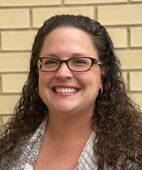By Heather Garcia
Halloween is quickly approaching and for many parents it means a late night out, a later bedtime, and grumpy kids the next morning. This year, it may mean steering our kids towards costumes with coordinating masks and candy bags on sticks. For a teacher—Halloween means that November 1st (and perhaps November 2nd) has the potential to be a nightmare full of sleep-deprived and sugar-crashing kids.
In the high school AP® world, our kids may no longer stay out late trick or treating, but every day of the year in our classrooms is like diving into a giant sack of Halloween candy. Our kids come to us as a mixed bag. We can never predict who we will get in our rooms (whether they be virtual or physical), what kinds of skills they have, or how willing they are to put in the hard work that AP® courses require. We all know that there is an endgame in mind: earning college credit through AP® Exam scores. The challenge for us, as educators, is to take that mixed bag, shake it all up to find out what is inside, and to assess what our kids might need from us in order to find success.
Some years we get a lot of Lemonheads—those kids who think they’ve “got it,” but who desperately need to listen to constructive feedback. With a lot of effort and patience, we can move beyond the hard, bitter outer layer and get to the meat of the issue. Eventually, the kids listen, they learn that breaking down the layers and the defenses are okay, and then they are sweetly rewarded with growth in their skills. It was a long process to get there, but the kids became proud of themselves and the progress they have made.
We get a lot of Milk Duds who stick together for everything: every group project, every study session, and every book talk. They appear dependent upon one another for everything, and when they are separated and forced to write an independent essay, they panic, they freeze, they feel the absence of their support group so acutely that their thoughts suffer, their writing suffers, and they flounder. We have to allow those kids the comfort of the group as they grow in new skills, but we also need to ensure that we pry them apart from their support group and allow them to stand on their own, to practice hard skills independently, and to learn what works for them before they get to test day.
Some kids come to us with solid skills. They have a strong foundation that they rest upon and they can do some analysis, but it is just at a basic level. They get by. These kids are the Tootsie Rolls of the group. They don’t go above and beyond, but they are solid kids who come to school ready to work, even if they didn’t do the homework. These kids have the potential to do so much more with the right motivation and the right practice. It is just giving them that push and molding their own expectations so that they end up wanting more out of their experience. These kids are moldable under the right pressure.
Some kids already want more out of their AP® experience. They come to us more than ready to play—they are ready to win. These kids are the full-size Snickers of the bag. They are the cream of the crop and the ones that we wouldn’t trade for anything. These kids are often called the “walk-in 5s.” These kids could tackle an AP® Exam during the first week of school and earn college credit. The system doesn’t allow for that, so they sit in our classes, they write essays that are multilayered and complex, full of rich claims and fluid syntax and erudite analysis. These kids bring their A-game every time.
The challenge for us as teachers is that we need to figure out how to teach to reach every AP® student, even when we may not have them in the room in front of us. We need to remember that just because our Snickers kid learned how to analyze Petrarchan Sonnets in a weekend doesn’t mean that our Lemonheads don’t need another couple of weeks of practice or that our Tootsie Rolls aren’t just hanging out in the back waiting for us to help them with that final step of analysis.
My suggestion: embrace the mixed bag. These kids were all brought together with a common goal, so treat every day like it is November 1st: sort out the candy. We need to sift through all the wrappers, all the packaging, all the unnecessary baggage, and help ALL our students succeed. They bring so much awesomeness to the table every day. Sometimes as educators we get so caught up in our daily challenges that we forget for a moment about the little nuggets of sweetness right in front of us. Some may need additional practice. Some may need to be pushed a little harder. Some are ready to be challenged. But they all need US to see them and value them for exactly who they are.

Heather Garcia is an English teacher at Charlotte High School, Florida, where she teaches AP® English Literature and AP® English Language. She is a professional development leader in her district, running annual new-teacher trainings and is now the Curriculum and Instructional Specialist for her district for grades 6-12. After 16 years of hands-on experience, Heather has developed a series of strategies to help her students navigate challenging texts. Her favorite book is the Steinbeck classic, East of Eden.
 Help
Help